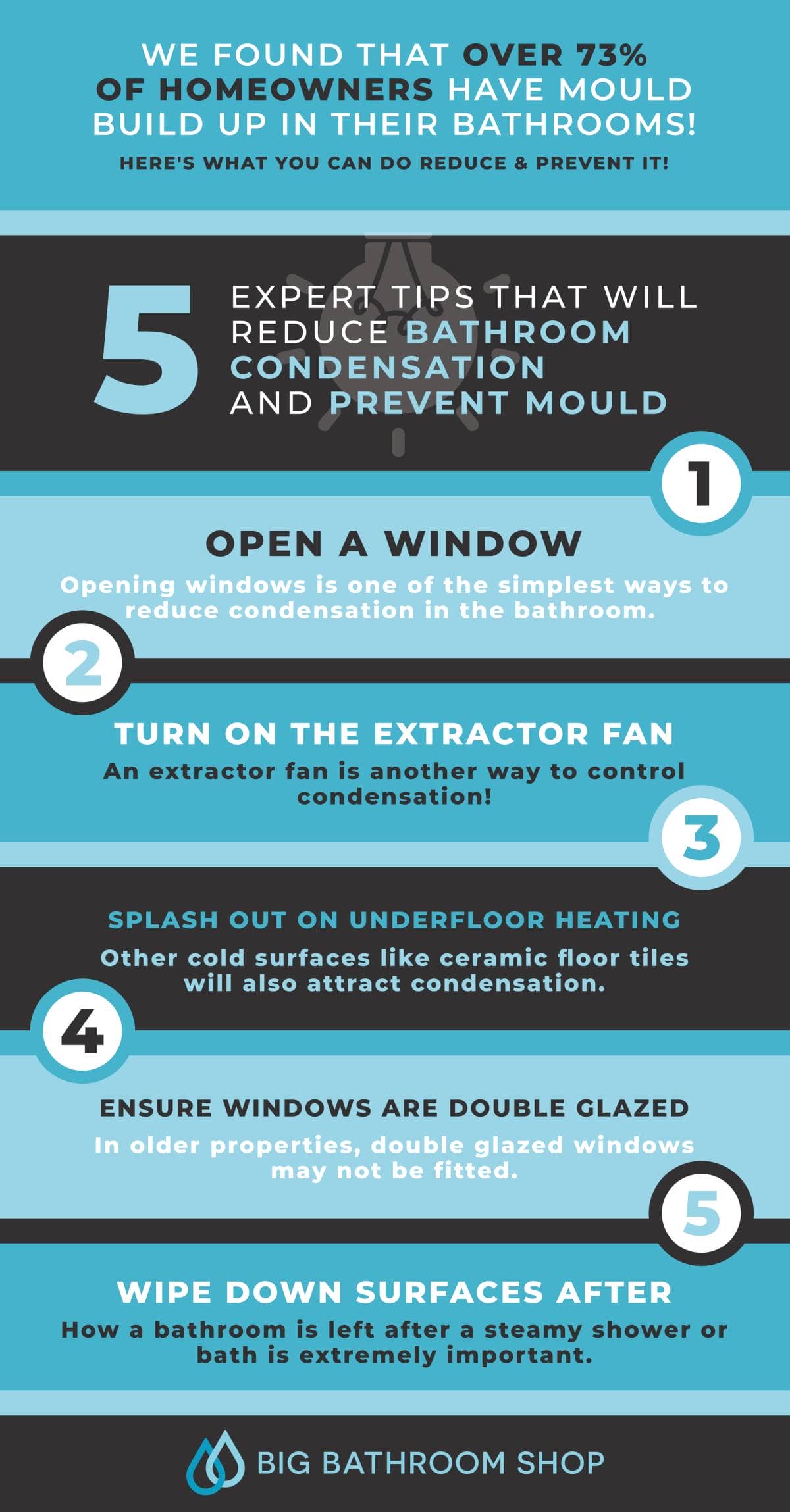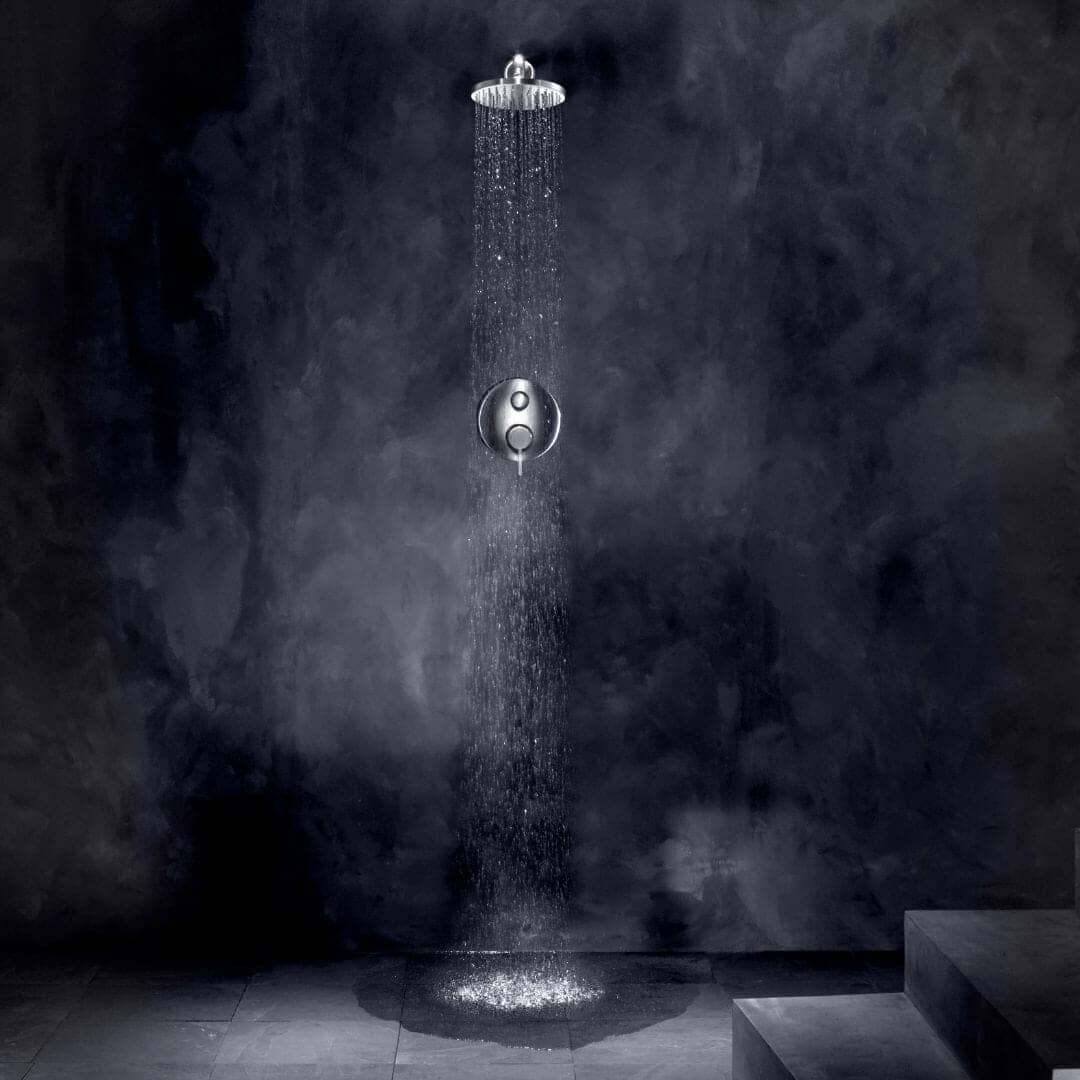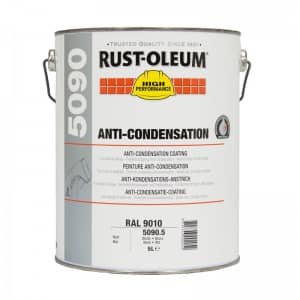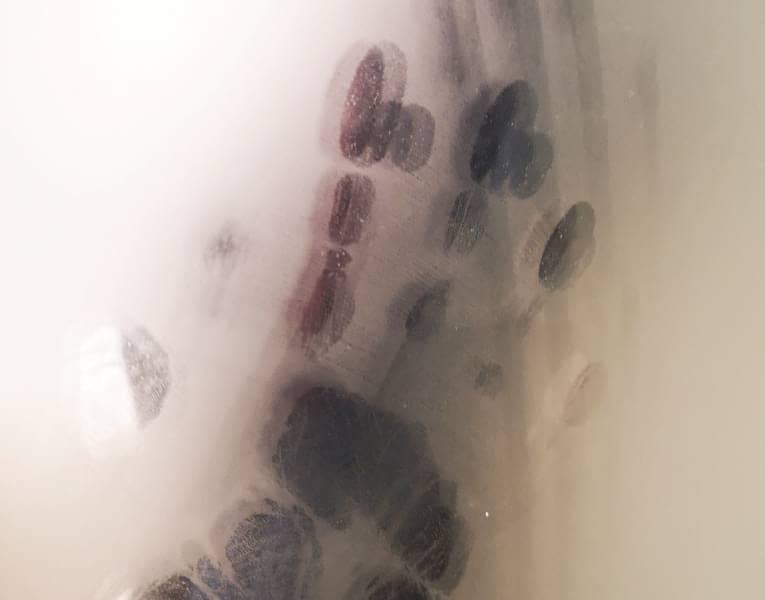Bathroom condensation is so annoying, and it’s a common problem in most homes with a 40% increase in Google searches asking. “how to prevent mould in my home?”
We discovered that 73% of homeowners have mould build up in their bathrooms and it is coindensation that is causing the problems.
Condensation forms when moisture is released into the air and mixes with water vapour.
Once this makes contact with cold surfaces, the droplets form on areas such as mirrors and windows.
After a shower or bath, water droplets form on the window, walls and mirror when the warm, damp air is cooled by these cold surfaces.
Warm air also holds more moisture, which results in heavier condensation.
But don’t worry, there are a variety of ways that you can deal with bathroom condensation to help keep the space drier and less prone to unsightly mould growth.

What is condensation?
Condensation is all to do with temperature, air and water vapour.
Take the bathroom for example, it’s a humid environment and moisture is released into the air by taking a shower or bath.
As the moisture mixes with the air as water vapour, it eventually makes contact with a cold surface and forms as droplets on surfaces such as mirrors and windows – this is known as condensation.
The hotter the water vapour, the more moisture the air can hold, which is why condensation becomes a bigger issue in the bathroom, as there’s lots of steam rising from the water.
What is the best way to stop bathroom condensation?
Condensation not only mists up mirrors and windows, it can lead to unsightly mould too. Although you’ll never completely stop condensation there are a few simple yet effective ways to reduce it in your bathroom.
To prevent condensation forming in the bathroom you should open a window and switch on the extractor fan. Keep the bathroom door closed so the moisture doesn’t escape into other areas of your home. If you forget to open the window or turn the extractor fan on, you’ll soon notice the large amount of condensation that’s formed. Ok, so you may not want to open the window on a freezing cold morning, but it won’t be chilly for long, as the hot water and steam will soon warm the bathroom up.
Cold wall surfaces such as ceramic tiles will also attract condensation, and the only solution to reduce this is to keep the bathroom warm. Underfloor heating can help with this issue.
You may also want to consider double glazed windows if you only have single glazed. Single glazing is colder and attracts more condensation.
Open a window
Opening windows is one of the simplest ways to reduce condensation in the bathroom.
Although opening a window may not be high on the agenda during a cold winter’s morning shower, it’s an easy way to help excess moisture and steam escape rather than clinging to the water vapour and landing on surfaces around the room.
If you have a bathroom without a window, it can prove very difficult to open one!
This great guide on what you can do to ventilate a bathroom without a window is worth a look if that’s how your home is set up.
Turn on the extractor fan
An extractor fan is another way to control condensation.
An extractor fan takes the moist air out of your bathroom and transports it outside. You should clean the extractor fan every so often to remove dust and dirt – this ensures it runs effectively.
Splash out on underfloor heating
Other cold surfaces like ceramic floor tiles will also attract condensation.
Investing in underfloor heating is a great long-term solution when it comes to tackling bathroom condensation and as a bonus, it is likely to add some value to your home as well.
Ensure windows are double glazed
In older properties, double glazed windows may not always be fitted.
Double glazing helps retain much more heat than single glazing which will warm up those colder surfaces that are likely to attract condensation.
Fitting double glazed windows is another long-term solution that will add value to a home too.
Wipe down surfaces afterwards
How a bathroom is left after a steamy shower or bath is extremely important when it comes to eliminating mould.
Always remember to wipe down any surface that has acquired condensation before leaving the extractor on or windows open to air out the room. Use a dry towel to soak up as much moisture as possible.
I would recommended regularly checking walls, fixtures and fittings for mould throughout the colder months and acting fast if you notice any black spots to ensure that the problem doesn’t getting any worse.

How to stop the bathroom mirror from steaming up
Bathroom mirrors can quickly steam up and become covered in condensation. There are a couple of solutions to prevent this from happening. You can fit a new mirror with a heated demister pad – this will keep the surface of the mirror warm, so there’s no chance for any condensation to form. If you don’t want to upgrade your bathroom mirror you can lather it up with shaving cream and wipe clean with a towel – it will stay fog free for a while, it’s as simple as that!
You can also try using a 50-50 solution of vinegar and water. Pour a cup of water and a cup of vinegar into an old spray bottle, add a couple of drops of washing-up liquid and spray onto the mirror. Wipe with a towel and the glass should be free from steam for a few days. To ensure a streak free finish, use newspaper to wipe it down.
Other ways to tackle bathroom condensation

Here’s a few other simple yet effective ways to reduce condensation in your bathroom:
- Wipe up water around the basin and on the floors
- Fix any leaks
- Air out damp bath mats and towels
- Take a slightly cooler shower
- Apply a specially formulated anti-condensation paint to bathroom walls and ceilings such as Rust-Oleum 5090 Anti-Condensation Coating – this is a water absorbing coating based on a water-based acrylic polymer. It also contains a fungicide to prevent mould growth.
- Turn up the thermostat a few degrees to warm the air in the bathroom. The warmer air will warm up cold surfaces and reduce condensation.
- You can also use an electric heated towel rail to keep your bathroom warmer – this helps to keep walls and windows above condensation temperature.
Rikki has a passion for interior design and an even bigger passion for writing about it. When she isn’t writing about gorgeous bathroom interiors, you’ll find her discovering all of the latest trends.





